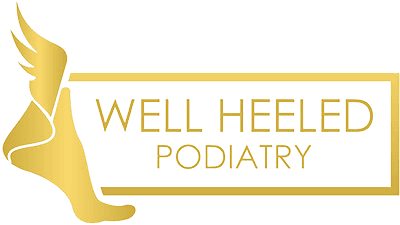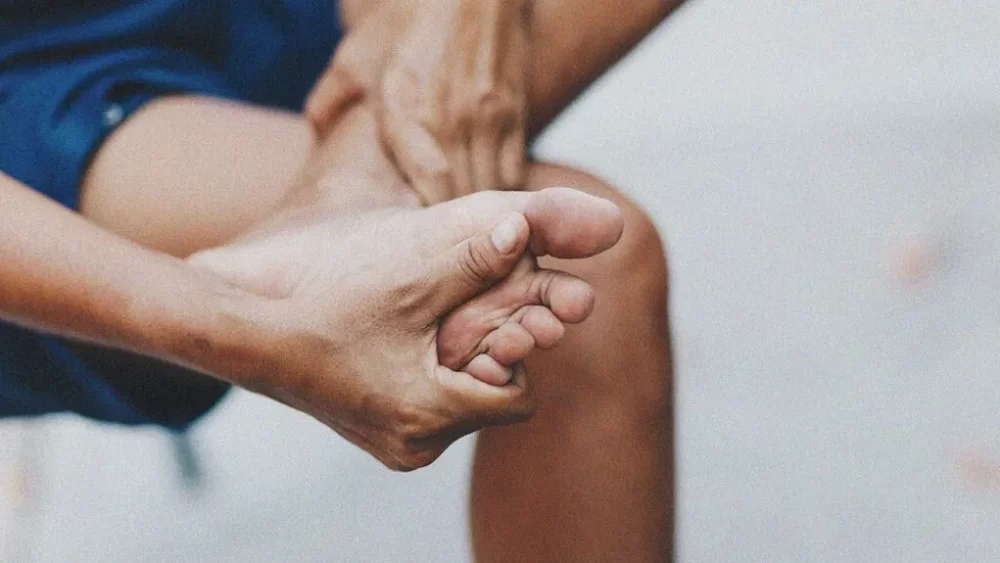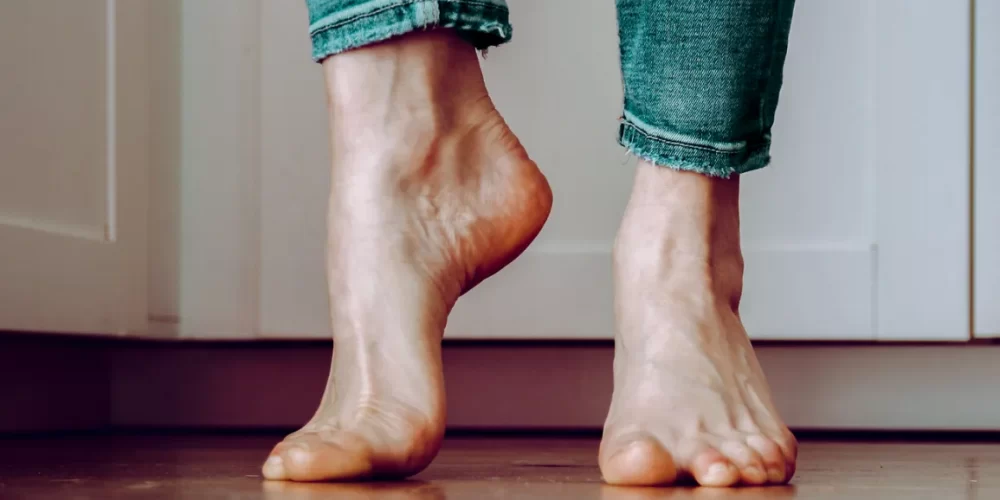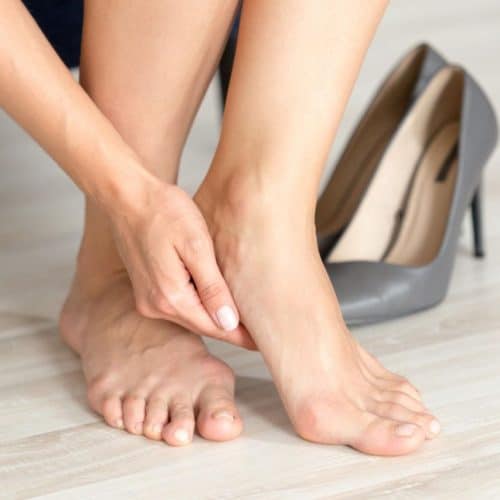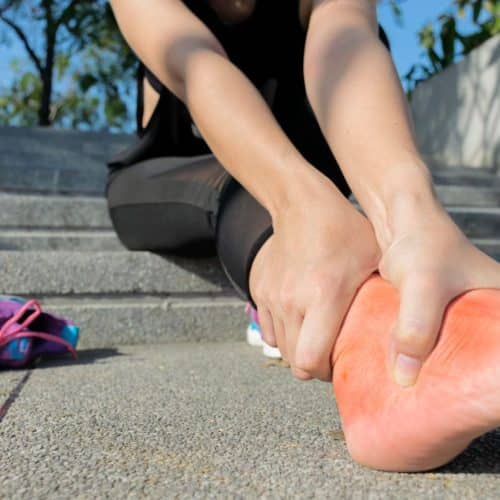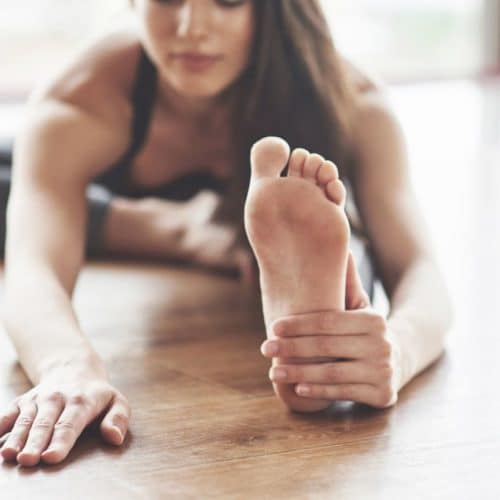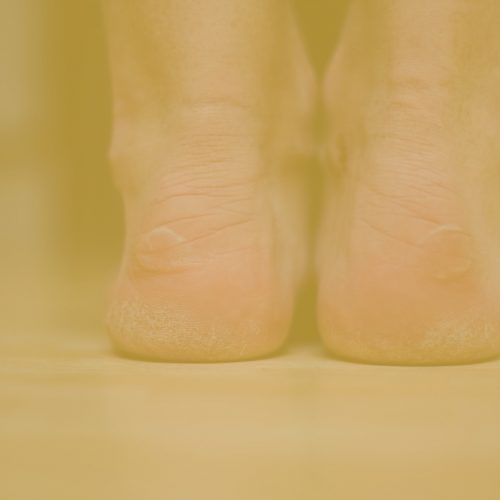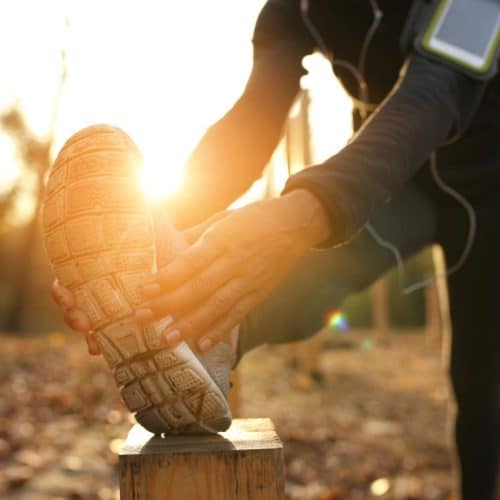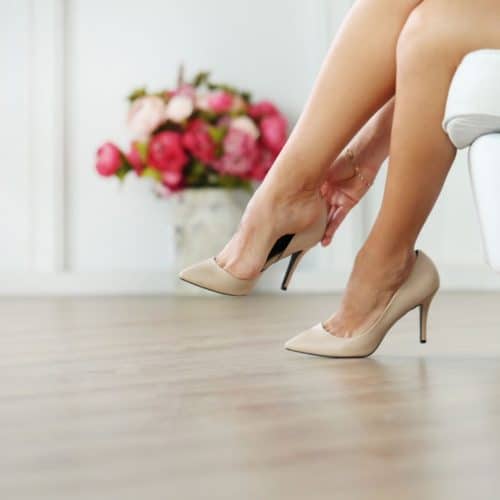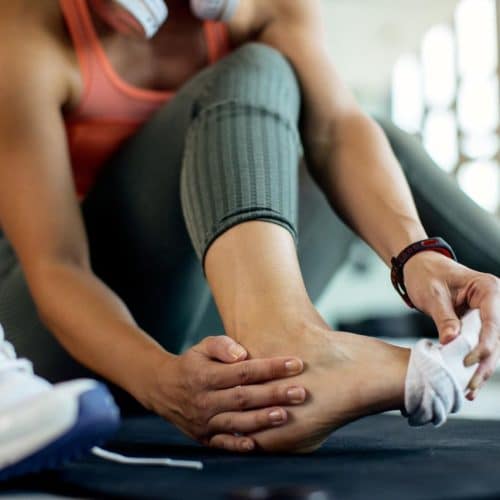Are your feet constantly bothering you, leaving you desperate for relief? Whether it’s achy feet after a long day at work or persistent toe pain that just won’t go away, we’ve all experienced foot issues that make us wish for a quick solution. Look no further! This article will explore effective ways to soothe those achy feet, alleviate toe pain, and tackle other foot-related problems. Say goodbye to discomfort and hello to comfort with these practical tips!
Understanding Achy Feet and Toe Pain
Achy feet and toe pain are common ailments affecting people of all ages and lifestyles. These discomforts can be more than just a passing annoyance; they can significantly impact our daily activities and overall quality of life. To effectively address these issues, it is essential to understand the causes and underlying conditions that contribute to achy feet and toe pain.
1. Causes of Achy Feet and Toe Pain
- Ill-Fitting Footwear: Foot discomfort is a common side effect of wearing shoes that are either excessively tight or do not provide sufficient support for the foot. For example, wearing high heels can place an abnormal amount of pressure on the balls of the feet, which can lead to pain.
- Overuse and Strain: Engaging in activities that involve prolonged standing, walking, or running can strain the muscles and ligaments in the feet, leading to achiness.
- Foot Structure: Some individuals naturally have flat feet or high arches, which can affect weight distribution and result in foot pain.
- Injury and Trauma: Accidents or injuries to the feet can cause lingering pain and discomfort.
- Arthritis: Various forms of arthritis, such as osteoarthritis or rheumatoid arthritis, can cause inflammation and pain in the feet and toes.
- Nerve Issues: Conditions like Morton’s neuroma or peripheral neuropathy can lead to shooting or burning pain in the feet.
2. Common Conditions Leading to Foot Discomfort
- Plantar Fasciitis: It is a common ailment in which the plantar fascia, which is a band of tissue that links the heel to the toes, becomes inflamed, producing pain and discomfort in the heel. This disease is known as plantar fasciitis.
- Bunions: Bunions are bony lumps that develop on the joint at the base of the big toe. This causes the big toe to bend inward towards the other toes, which may be quite painful and makes it impossible to wear certain types of footwear.
- Corns and Calluses: These are thickened and hardened areas of skin that develop due to friction or pressure, often causing localised pain.
- Ingrown Toenails: When the edge of a toenail grows into the surrounding skin, ingrown toenails can be painful and prone to infection.
- Gout: This form of arthritis results from the buildup of uric acid in the joints, commonly affecting the big toe and causing intense pain and swelling.
- Metatarsalgia: This condition involves inflammation and pain in the metatarsal region, the area between the arch and toes.
- Morton’s Neuroma: This condition is characterised by a thickening of the tissue around a nerve that travels from the ball of the foot down to the toes. It frequently results in a searing pain in the ball of the foot.
- Hammertoes: Hammertoes occur when the toe’s middle joint becomes bent, causing pain and discomfort, especially when wearing shoes.
- Tendonitis: Inflammation of the tendons in the foot can cause pain and limited mobility.
- Peripheral Neuropathy: This condition involves damage to the peripheral nerves, often causing tingling, numbness, or burning sensations in the feet.
Understanding the various causes and conditions leading to achy feet and toe pain is crucial in finding effective remedies and preventive measures. By addressing these issues proactively, individuals can experience significant relief and improve their overall foot health and well-being.
Tips for Relieving Achy Feet
Dealing with achy feet can be frustrating, but fortunately, there are several simple and effective ways to alleviate discomfort and promote foot health. By incorporating these tips into your daily routine, you can find relief and keep your feet feeling their best.
1. Choosing Appropriate Footwear
- Invest in shoes that provide proper arch support and cushioning. Look for shoes with ample toe room, and avoid high heels for extended periods.
- Consider using orthotic inserts or insoles to provide additional support and reduce pressure on specific areas of your feet.
2. Foot Stretches and Exercises
- Perform regular foot stretches and exercises to strengthen the muscles and tendons in your feet.
- Simple exercises like toe curls, ankle circles, and calf stretches can help improve flexibility and reduce foot discomfort.
3. Foot Massages and Relaxation Techniques
- Treat yourself to a soothing foot massage using essential oils or a tennis ball to roll under your feet.
- Relaxing techniques like deep breathing or meditation can help reduce stress-induced foot pain.
4. Elevate Your Feet
- Whenever possible, elevate your feet to reduce swelling and promote blood circulation.
- Elevating your feet at the end of the day can help alleviate fatigue and tension.
5. Ice or Heat Therapy
- Apply ice packs to reduce inflammation and numb the area for acute pain.
- Heat therapy, such as a warm towel or a heating pad, can help relax tense muscles and ease chronic foot discomfort.
6. Foot Soaks
- Soaking your feet in warm water with Epsom salt can reduce inflammation and provide relaxation.
- Adding a few drops of essential oils like lavender or peppermint can enhance the soothing effect.
7. Maintain a Healthy Weight
- Excess weight can put additional strain on your feet, exacerbating foot discomfort.
- Maintain a balanced diet and regular physical activity to achieve a healthy weight and relieve pressure on your feet.
8. Wear Compression Socks
- Compression socks can improve blood circulation and reduce swelling in the feet and ankles.
- They are particularly beneficial for individuals who spend long hours on their feet.
9. Alternate Footwear
- Avoid wearing the same pair of shoes daily to prevent repetitive stress on specific areas of your feet.
- Rotate between different shoes to give your feet a break and reduce the risk of developing foot problems.
10. Take Breaks and Rest
- If your daily routine involves standing or walking for extended periods, take short breaks to rest your feet.
- Elevate your feet during breaks to reduce swelling and promote relaxation.
Remember, taking care of your feet is essential for overall well-being. By following these tips and incorporating foot-friendly habits into your daily life, you can ease achy feet and maintain healthy, happy feet. If the pain persists or worsens, it’s essential to consult a podiatrist for a proper diagnosis and personalised treatment plan.
Treating Toe Pain
Toe pain can be particularly discomforting and disruptive to our daily activities. Whether caused by injury, conditions like bunions, ingrown toenails, or other factors, promptly addressing toe pain is crucial for relieving discomfort and preventing further complications. Here are some effective ways to treat toe pain and promote better foot health:
1. Ingrown Toenails
- Soak the affected foot in warm, soapy water to soften the skin and reduce swelling.
- Carefully lift the edge of the ingrown toenail using a clean cotton ball or dental floss to place a small piece of cotton between the nail and the skin. This can help the nail grow above the skin’s edge.
- Avoid attempting to cut the ingrown toenail yourself, as this may lead to infection or further complications. Consult a podiatrist for proper treatment.
2. Bunions
- Wear shoes with a wide toe box to reduce pressure on the bunion and prevent further irritation.
- Use protective pads or cushions over the bunion to minimise friction and discomfort.
- Apply ice packs to the affected area to reduce inflammation and pain.
- Consult a podiatrist for potential surgical options if conservative treatments do not provide relief.
3. Corns and Calluses
- Soak your feet in warm water to soften the corns and calluses.
- To remove the thickened skin, gently exfoliate the affected area using a pumice stone or a foot file.
- Apply moisturising creams to keep the skin soft and prevent the buildup of calluses.
- Avoid using over-the-counter corn plasters, as they can lead to skin irritation.
4. Plantar Fasciitis
- Perform gentle stretches for the calves and feet to alleviate tension on the plantar fascia.
- Use orthotic inserts or arch supports in your shoes to provide additional support and reduce strain on the plantar fascia.
- Apply ice to the heel area to reduce inflammation and pain.
5. Gout in the Toe
- Rest the affected foot and avoid putting pressure on the inflamed joint.
- Stay hydrated to help flush out uric acid from the body.
- Follow a low-purine diet, avoiding foods like organ meats, shellfish, and certain vegetables to reduce uric acid buildup.
- Consult a healthcare practitioner for medications to manage gout symptoms.
6. Toe Exercises
- To improve flexibility and reduce stiffness, perform gentle toe exercises like toe curls, toe spreads, and toe stretches.
- Strengthening the muscles in the toes can enhance overall foot health and reduce discomfort.
7. Cushioning and Splinting
- Use gel or foam cushions to provide extra padding and protection for sensitive or injured toes.
- Splinting the affected toe may help realign it and relieve pain in cases of hammertoes.
8. Seek Professional Help
- If toe pain is persistent, severe, or accompanied by other concerning symptoms, consult a podiatrist for a comprehensive evaluation and personalised treatment plan.
Individuals can find relief and improve their foot health by addressing toe pain promptly and adopting preventive measures. Proper foot care, including wearing appropriate footwear and maintaining good hygiene, prevents toe pain and promotes overall well-being.
Preventive Measures for Foot Health
Taking proactive steps to maintain foot health is essential for preventing common foot problems and promoting overall well-being. By incorporating simple yet effective preventive measures into your daily routine, you can keep your feet happy, comfortable, and free from discomfort. Here are some valuable tips to help you maintain optimal foot health:
1. Proper Foot Hygiene
- Keep your feet clean and dry daily with mild soap and water.
- Dry your feet thoroughly, especially between the toes, as moisture can lead to fungal infections like athlete’s foot.
2. Trimming Toenails Correctly
- Trim your toenails straight across, avoiding rounding the corners to prevent ingrown toenails.
- Use a nail clipper and avoid cutting nails too short to prevent injury.
3. Wear Appropriate Footwear
- Choose footwear that fits well and provides adequate support and cushioning.
- Avoid wearing too tight or loose shoes, as they can lead to blisters, calluses, and other foot problems.
- Alternate between different types of shoes to reduce repetitive stress on your feet.
4. Maintain a Healthy Weight
- Excess weight can strain your feet, increasing the risk of foot pain and discomfort.
- Maintain a balanced diet and regular physical activity to achieve and maintain a healthy weight.
5. Practice Foot Stretches and Exercises
- Perform regular foot stretches and exercises to improve foot strength and flexibility.
- Stretching your calf muscles and toes can help prevent common foot issues like plantar fasciitis and hammertoes.
6. Wear Socks and Footwear in Public Areas
- Wearing socks and footwear that is acceptable in public settings, especially community showers, locker rooms, and swimming pools, can help protect your feet from being infected with several types of bacteria.
7. Choose Breathable Footwear
- Choose shoes that are constructed of materials that are breathable in order to promote air circulation and decrease the likelihood of bacterial and fungal development.
8. Regular Foot Inspections
- Check your feet regularly for signs of redness, swelling, or abnormalities.
- Inspect the soles, heels, and spaces between the toes to identify potential issues early.
9. Avoid Going Barefoot in Certain Situations
- Refrain from walking barefoot in areas where there might be sharp objects, hot surfaces, or rough terrain to avoid injuries.
10. Maintain a Good Posture
- Proper posture can improve weight distribution and reduce strain on your feet and ankles.
- Pay attention to your sitting and standing posture to promote better foot health.
Lifestyle Changes for Healthy Feet
Maintaining healthy feet goes beyond just addressing specific foot problems; it involves adopting a holistic approach to foot care. Certain lifestyle changes can significantly improve foot health and reduce the risk of common foot ailments. Here are some essential lifestyle changes with detailed explanations:
1. Maintaining a Healthy Weight
Excess body weight can strain your feet and lead to various foot issues, including arch pain, plantar fasciitis, and joint discomfort. By achieving and maintaining a healthy weight through a balanced diet and regular exercise, you can reduce the pressure on your feet and improve overall foot health.
2. Foot-Friendly Exercises
Incorporate foot-friendly exercises into your daily routine to strengthen your feet’ muscles, tendons, and ligaments. Low-impact activities like swimming, cycling, and yoga can enhance foot flexibility and support, reducing the risk of injuries and chronic foot pain.
3. Proper Footwear Selection
Wearing appropriate footwear is crucial for foot health. Choose shoes with sufficient arch support, cushioning, and a proper fit. Avoid high heels and shoes with narrow toe boxes, as they can lead to foot deformities and discomfort.
4. Alternate Sitting and Standing
Prolonged periods of sitting or standing can strain your feet. If your job or daily activities involve prolonged sitting or standing, consciously alternate between the two positions. Take short breaks to walk around or perform simple foot stretches.
5. Regular Foot Care Routine
Create a regimen for your foot care so that you can keep your feet clean and in good condition at all times. You should wash your feet every day with a gentle soap and water, giving particular attention to the spaces in between each of your toes. Apply some foot cream to protect the skin on your feet from becoming dry and cracked.
6. Supportive Footwear at Home
Opt for supportive footwear like slippers or sandals with arch support, even at home. Avoid walking barefoot on hard surfaces, leading to foot strain and injuries.
7. Foot Hygiene in Public Areas
Protect your feet from infections by practising good foot hygiene in public areas. Wear socks and shoes in communal showers, locker rooms, and around swimming pools to reduce the risk of contracting fungal infections like athlete’s foot.
8. Avoid Tight Hosiery
Avoid wearing tight hosiery or socks with tight elastic bands that can restrict blood flow to your feet. Opt for socks made of breathable materials to keep your feet dry and comfortable.
9. Regular Foot Inspections
Perform regular foot inspections to check for signs of blisters, calluses, or skin changes. Early detection of potential foot issues can help you address them before they worsen.
10. Elevate Your Feet
Elevate your feet whenever possible, especially after long-standing or when your feet feel fatigued. Elevating your feet above heart level can improve blood circulation and reduce swelling.
11. Avoid Smoking
Smoking can reduce blood flow to your feet and hinder the body’s natural healing processes. Quitting smoking can enhance overall foot health and reduce the risk of foot-related complications.
When to Consult a Podiatrist
Visiting a podiatrist can provide valuable insights and specialised care for various foot and ankle conditions. Knowing when to seek professional help is essential for maintaining optimal foot health and addressing potential issues promptly. Here are some key signs and scenarios indicating it’s time to consult a podiatrist:
- Persistent Foot Pain: If you experience continuous foot pain that doesn’t improve with rest or self-care, seeking professional evaluation is essential. Persistent pain may signal an underlying condition that requires expert attention.
- Foot or Ankle Injuries: In the event of a foot or ankle injury, such as a sprain, fracture, or dislocation, a podiatrist can assess the severity of the injury, provide appropriate treatment, and guide you through the recovery process.
- Swelling and Inflammation: Unexplained swelling, redness, or inflammation in the feet or ankles may indicate an infection or a more severe underlying issue that requires medical attention.
- Limited Range of Motion: Difficulty moving your toes, ankles, or feet through their full range of motion could indicate joint problems or tendon issues that necessitate professional assessment.
- Visible Deformities: Visible changes in the structure of your feet or toes, such as bunions, hammertoes, or significant calluses, should be examined by a podiatrist for appropriate interventions and to prevent further complications.
- Numbness or Tingling: Persistent numbness, tingling, or a pins-and-needles sensation in the feet can indicate nerve-related issues requiring expert evaluation.
- Foot Conditions Affecting Mobility: A podiatrist should promptly evaluate foot pain or conditions that hinder your ability to walk, stand, or participate in daily activities to identify the cause and develop an effective treatment plan.
- Chronic Skin or Nail Problems: Recurring skin conditions like athlete’s foot, persistent corns, or ingrown toenails should be examined by a podiatrist for proper diagnosis and treatment.
- Diabetes or Peripheral Neuropathy: Individuals with diabetes or peripheral neuropathy should have regular foot examinations by a podiatrist to monitor foot health and prevent complications.
- Reoccurring Foot Issues: A history of reoccurring foot problems or persistent foot pain should be addressed by a podiatrist to identify the root cause and develop long-term management strategies.
- Preventive Foot Care: Even if you don’t have apparent foot problems, regular check-ups with a podiatrist can benefit preventive care. It can help identify potential issues early and promote overall foot health.
Remember, early intervention and accurate diagnosis are crucial in effective foot care. If you experience any of the above signs or have concerns about your foot health, don’t hesitate to schedule an appointment with a podiatrist to ensure timely and appropriate care for your feet and ankles.
Conclusion
In conclusion, taking care of your feet is essential for overall well-being and comfort. Neglecting foot health can lead to problems such as achy feet, toe pain, and other discomforts. However, with a few simple practices and self-care routines, you can ease these issues and keep your feet happy and healthy.
What is your favourite foot-care routine to ease achy feet and keep them feeling rejuvenated? Share your tips and tricks in the comments below, and let’s all take a step towards happier, healthier feet!
Content Summary
- You can find relief for those nagging foot problems in just a few simple steps.
- Discover how proper foot care, suitable footwear, and easy exercises can work wonders for your feet.
- With practical solutions, expert advice, and engaging content, you will surely find the answers for better foot health.
- Achy feet and toe pain are common ailments affecting people of all ages and lifestyles.
- To effectively address these issues, it is essential to understand the causes and underlying conditions that contribute to achy feet and toe pain.
- Various forms of arthritis, such as osteoarthritis or rheumatoid arthritis, can cause inflammation and pain in the feet and toes.
- Conditions like Morton’s neuroma or peripheral neuropathy can lead to shooting or burning pain in the feet.
- It is a common ailment in which the plantar fascia, which is a band of tissue that links the heel to the toes, becomes inflamed, producing pain and discomfort in the heel.
- This disease is known as plantar fasciitis.
- Invest in shoes that provide proper arch support and cushioning.
- Treat yourself to a soothing foot massage using essential oils or a tennis ball to roll under your feet.
- Whenever possible, elevate your feet to reduce swelling and promote blood circulation.
- Soaking your feet in warm water with Epsom salt can reduce inflammation and provide relaxation.
- Maintain a balanced diet and regular physical activity to achieve a healthy weight and relieve pressure on your feet.
- Compression socks can improve blood circulation and reduce swelling in the feet and ankles.
- Avoid wearing the same pair of shoes daily to prevent repetitive stress on specific areas of your feet.
- Whether caused by injury, conditions like bunions, ingrown toenails, or other factors, promptly addressing toe pain is crucial for relieving discomfort and preventing further complications.
- Soak your feet in warm water to soften the corns and calluses.
- Perform gentle stretches for the calves and feet to alleviate tension on the plantar fascia.
- If toe pain is persistent, severe, or accompanied by other concerning symptoms, consult a podiatrist for a comprehensive evaluation and personalised treatment plan.
- Individuals can find relief and improve their foot health by addressing toe pain promptly and adopting preventive measures.
- Proper foot care, including wearing appropriate footwear and maintaining good hygiene, prevents toe pain and promotes overall well-being.
- Taking proactive steps to maintain foot health is essential for preventing common foot problems and promoting overall well-being.
- Keep your feet clean and dry daily with mild soap and water.
- Maintain a balanced diet and regular physical activity to achieve and maintain a healthy weight.
- Proper posture can improve weight distribution and reduce strain on your feet and ankles.
- Pay attention to your sitting and standing posture to promote better foot health.
- Maintaining healthy feet goes beyond just addressing specific foot problems; it involves adopting a holistic approach to foot care.
- Certain lifestyle changes can significantly improve foot health and reduce the risk of common foot ailments.
- Excess body weight can strain your feet and lead to various foot issues, including arch pain, plantar fasciitis, and joint discomfort.
- By achieving and maintaining a healthy weight through a balanced diet and regular exercise, you can reduce the pressure on your feet and improve overall foot health.
- Incorporate foot-friendly exercises into your daily routine to strengthen your feet’ muscles, tendons, and ligaments.
- Create a regimen for your foot care so that you can keep your feet clean and in good condition at all times.
- Visiting a podiatrist can provide valuable insights and specialised care for various foot and ankle conditions.
- Knowing when to seek professional help is essential for maintaining optimal foot health and addressing potential issues promptly.
- If you experience continuous foot pain that doesn’t improve with rest or self-care, seeking professional evaluation is essential.
- Individuals with diabetes or peripheral neuropathy should have regular foot examinations by a podiatrist to monitor foot health and prevent complications.
- A history of reoccurring foot problems or persistent foot pain should be addressed by a podiatrist to identify the root cause and develop long-term management strategies.
- Even if you don’t have apparent foot problems, regular check-ups with a podiatrist can benefit preventive care.
- Remember, early intervention and accurate diagnosis are crucial in effective foot care.
- If you experience any of the above signs or have concerns about your foot health, don’t hesitate to schedule an appointment with a podiatrist to ensure timely and appropriate care for your feet and ankles.
- In conclusion, taking care of your feet is essential for overall well-being and comfort.
- Neglecting foot health can lead to problems such as achy feet, toe pain, and other discomforts.
- However, with a few simple practices and self-care routines, you can ease these issues and keep your feet happy and healthy.
FAQs
1. How can I prevent foot pain after standing for long hours?
To prevent foot pain after prolonged standing, wear comfortable, supportive shoes. Take breaks to sit and elevate your feet whenever possible. Perform foot stretches during breaks to keep the muscles relaxed.
2. Can foot problems be a sign of other health issues?
Yes, foot problems can sometimes be indicative of underlying health issues. For example, numbness in the feet could be a sign of nerve damage related to diabetes. If you have concerns, consult a podiatrist.
3. Are there any natural remedies for foot pain relief?
Yes, several natural remedies can help relieve foot pain. Some examples include epsom salt soaks, essential oil massages, and ice therapy. However, if the pain persists, it’s essential to consult a podiatrist.
4. How do I know if my shoes are causing foot pain?
If your shoes are causing foot pain, you may experience discomfort, blisters, or calluses in specific areas of your feet. Ill-fitting shoes can also lead to arch pain and toe pain. Consider getting your feet measured by a professional to find the right shoe size.
5. Can foot exercises help with toe pain?
Certain foot exercises can help with toe pain by strengthening the muscles in your feet and toes. Toe curls and stretches can improve flexibility and reduce discomfort. Consult a physical therapist or podiatrist for personalised exercises.

